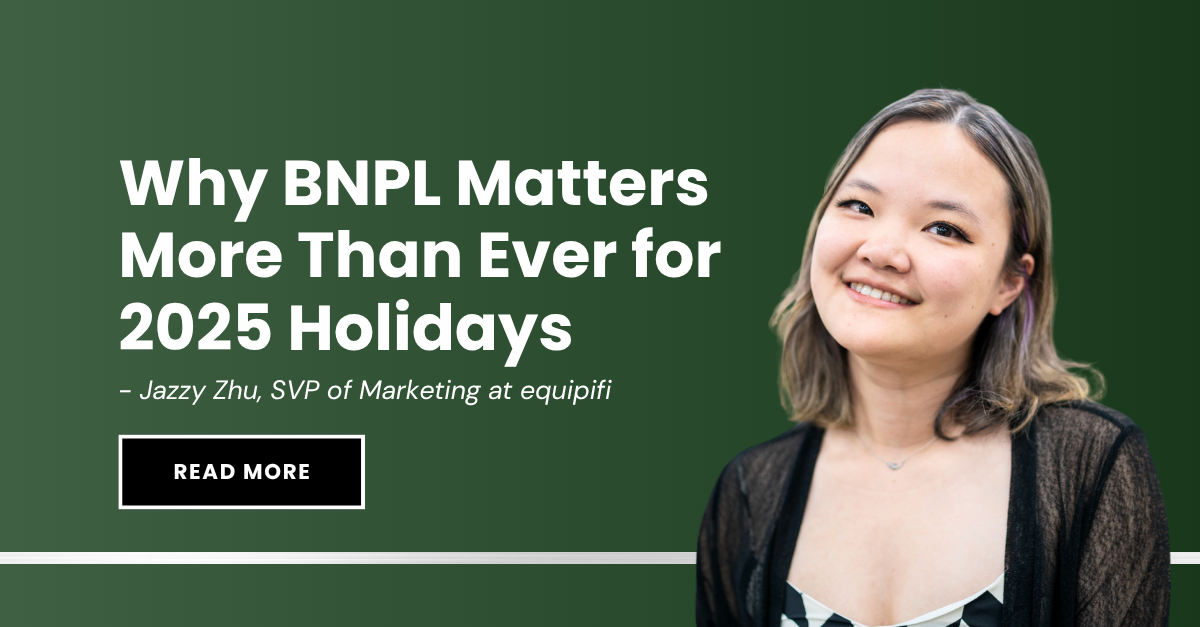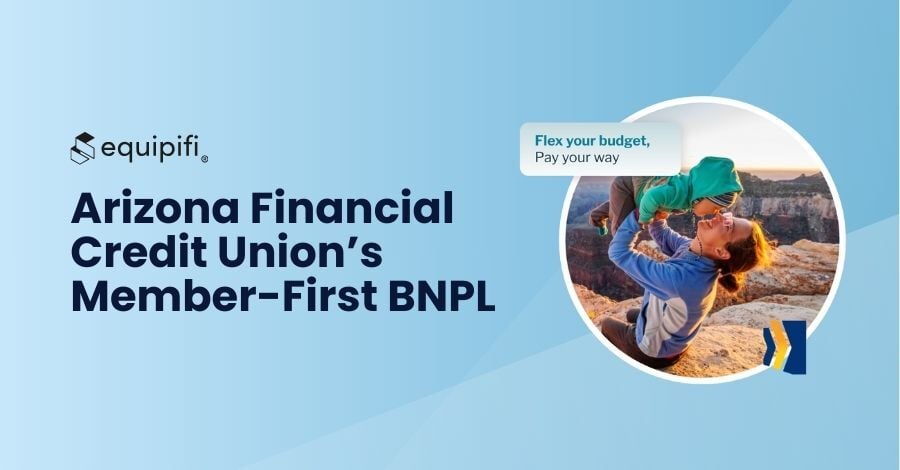Buy Now, Pay Later (BNPL) is no longer a trend, it’s a shift in how consumers expect to pay. But while fintechs and big tech race to own the BNPL experience, credit unions are uniquely positioned to offer a smarter, more member-centric alternative.
Last week, Emelda Baca (SVP of Consumer Lending at Arizona Financial) sat down with Lo Smith (VP of Sales at equipifi) on a webinar to explore the world of credit union BNPL, and to share why Arizona Financial invested in an in-house BNPL solution.
During the webinar, Emelda provided some insights into Arizona Financial’s BNPL journey. Starting October 2021, the credit union began formally gathering debit card data tracking its members’ monthly payment outflows used to settle 3rd-party BNPL loans. To the surprise of the team, members were already paying over $1 million to 3rd-party BNPL companies every month. Since then, the monthly pay-off amount to 3rd-party BNPL providers has grown 16 percent every year. With this data in hand, Arizona Financial knew that their members were increasingly choosing BNPL as a payment method, and that it was time to provide them with an in-house option.
Here are some of the questions that our audience members asked:
- How did Arizona Financial identify 3rd-party BNPL activity within its internal data?
Arizona Financial looked at their debit card transaction data for 3rd-party BNPL activity, as that’s how their members paid for these loans. They chose to focus on major 3rd-party BNPL providers, including Affirm, Afterpay, Klarna. Key data points tracked include monthly pay-off amount, and the number of pay-off transactions that took place. - How many in Arizona Financial’s membership are utilizing BNPL?
Arizona Financial launched its own BNPL program on March 4, 2025, and nearly 2,000 unique members have accepted BNPL loan offers in the first two months. Although it’s too early to say for Arizona Financial, many credit unions see hundreds of new users engage with its BNPL program every month. - Does Arizona Financial see repeat users for its BNPL program?
In the first two months, Arizona Financial’s members who use its credit union’s BNPL took out 2.3 loans on average.
equipifi data shows that return usage for credit union BNPL is high. In aggregate, 81% of users who use BNPL from their credit union will continue to do so in the second year (and more frequently).
- What are typical parameters credit unions set for their BNPL programs?
While every credit union tailors its BNPL program to its unique membership, the average loan amount on equipifi’s platform is around $250. This can vary depending on the credit union’s minimum purchase requirement for Split Your Payment, and/or if they are offering Plan Your Purchase (equipifi’s pre-purchase BNPL product, not tied to a debit card). Average term length hovers around 7 months, as most of our partner credit unions offer 3, 6 and 9-month plan options. - What are industry stats on loss ratios?
Currently, the aggregate delinquency rate for credit union BNPL is 1.35%. This is lower than 3rd-party BNPL delinquency rates (which tend to be around 2%), and is also lower than credit card delinquency rates (3.18%). - Is there a minimum asset size a credit union should be to leverage BNPL?
Credit unions decide to invest in BNPL for a variety of reasons. To stay competitive against fintech and meet consumer demand, financial institutions of all sizes should be providing BNPL as a payment option.
BNPL is a debit card product that is best implemented when tied to a checking account and embedded into the digital banking experience. That means it is more important to look at debit card and checking account usage within the financial institution. If you’d like to see whether your financial institution is a fit for launching an in-house BNPL product, reach out to us to chat!
To learn more about the implementation and performance of Arizona Financial’s In-House BNPL program, watch the webinar here.





SHARE